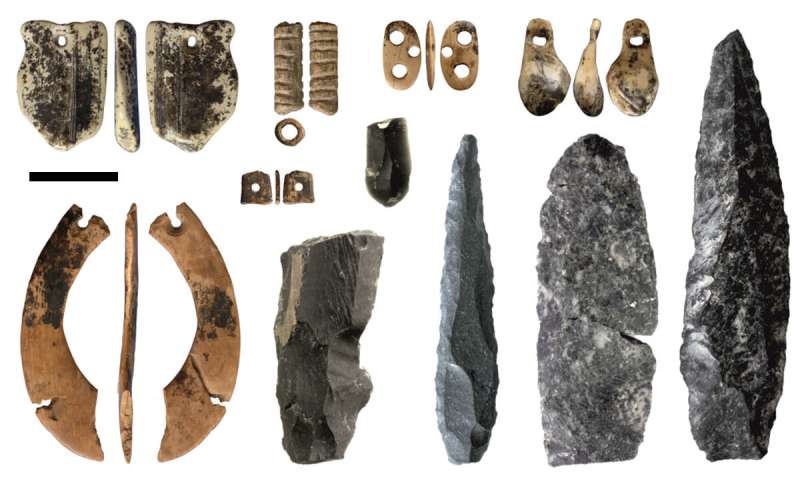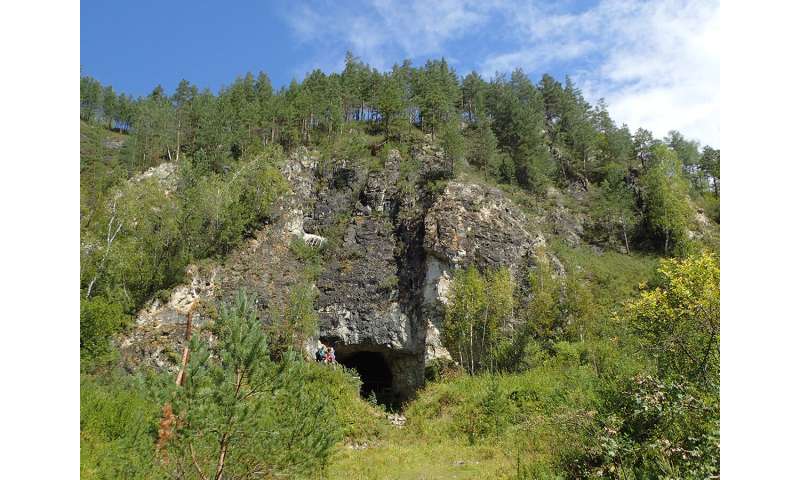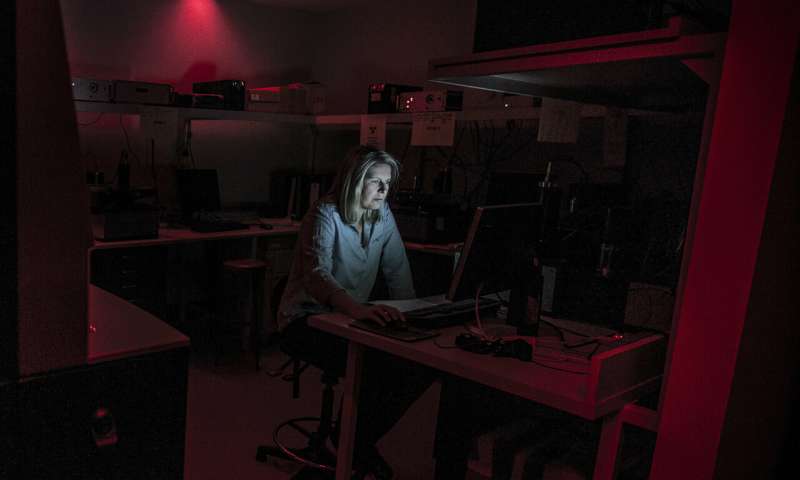Ancient mysteries of Denisova Cave uncovered

Ancient mysteries of Denisova Cave uncovered
New studies reveal deep history of archaic humans in southern Siberia
Two new studies have shed light on when two groups of archaic humans (hominins)—Neanderthals and their enigmatic cousins, the Denisovans—occupied Denisova Cave in Russia, the only site in the world known to have been occupied by both groups of hominins and by modern humans at various times.
For the first time, the studies put a timeline on when Denisovans and Neanderthals were present at the site and the environmental conditions they faced before going extinct. Denisovans, who were only discovered recently, lived at the same time as Neanderthals and modern humans roamed the Earth, but were genetically different from both.
The findings, published in Nature on 31 January 2019, are the result of many years of detailed investigation by a multi-disciplinary team of researchers from Russia, Australia, Canada, Germany and the United Kingdom.
The new studies show that hominins occupied the site almost continuously through relatively warm and cold periods over the past 300,000 years, leaving behind stone tools and other artefacts in the cave deposits. Fossils and DNA traces of Denisovans are found from at least 200,000 to 50,000 years ago, and those of Neanderthals between 200,000 and 100,000 years ago.

In 2018, a bone fragment from the cave yielded the genome of the daughter of Neanderthal and Denisovan parents—the first direct evidence of interbreeding between two archaic hominin groups. The new studies reveal that this girl lived around 100,000 years ago.
Denisova Cave is situated in the foothills of Siberia's Altai Mountains and has been excavated for the past 40 years by archaeologists from the Institute of Archaeology and Ethnography (Siberian Branch of the Russian Academy of Sciences) in Novosibirsk.
The site first came to worldwide attention in 2010, with the publication of the genome obtained from the fingerbone of a previously unknown type of hominin, dubbed Denisovans. Further revelations followed on the genetic history of Denisovans and Altai Neanderthals, based on analysis of the few and fragmentary hominin remains.
Until now, reliable dates for the hominin fossils recovered from the cave deposits remained elusive, as did dates for the DNA, artefacts, and animal and plant remains retrieved from the sediments.
Fifty radiocarbon dating ages and more than 100 optical dating ages support the new chronology for Denisova Cave, as well as a minimum age for the bone fragment of mixed Neanderthal/Denisovan ancestry obtained by uranium-series dating.
One of the studies, led by Professor Zenobia Jacobs, an Australian Research Council (ARC) Future Fellow with the University of Wollongong in Australia, involved optical dating of the cave sediments, most of which are too old for radiocarbon dating. Optical dating measures the time since quartz or feldspar grains in the sediment were last exposed to light.

The other study, led by Dr. Katerina Douka from the Max Planck Institute for the Science of Human History, Germany, obtained radiocarbon ages from bone, tooth and charcoal fragments recovered from the upper layers of the site, and developed a statistical model to integrate all dating information for the cave.
"This new chronology for Denisova Cave provides a timeline for the wealth of data generated by our Russian colleagues on the archaeological and environmental history of the cave over the past three glacial–interglacial cycles," Professor Jacobs said.
"We had to invent some new methods to date the deepest and oldest deposits and construct a robust chronology for the sediments in Denisova Cave," said Associate Professor Bo Li, geochronologist and ARC Future Fellow at the University of Wollongong.
To determine the most probable ages of the archaic hominin fossils, a statistical model was developed at the University of Oxford in the United Kingdom.
The model combined optical, radiocarbon and uranium-series ages with information on the stratigraphy of the deposits and genetic ages for the Denisovan and Neanderthal fossils relative to each other—the latter based on the number of substitutions in the mitochondrial DNA sequences, which were analysed at the Max Planck Institute for Evolutionary Anthropology in Germany.
Dr. Douka said the improved age estimates for the hominin fossils obtained using the new statistical model, "incorporate all of the dating evidence available for these small and isolated fossils, which could easily have been displaced after deposition."

Modern humans were present in other parts of Asia by 50,000 years ago, but the nature of any encounters between them and Denisovans remains open to speculation in the absence of any fossil or genetic traces of modern humans at the site.
"For the same reason, another open question is whether Denisovans or modern humans made the oldest bone points and personal ornaments [tooth pendants] found in the cave" said Professor Tom Higham (University of Oxford), a co-author of the radiocarbon dating and statistical modelling study.
"With direct dates of between 43,000 and 49,000 years ago, they are the earliest such artefacts known from all of northern Eurasia."
Professor Richard 'Bert' Roberts, a co-author of both papers and Director of the ARC Centre of Excellence for Australian Biodiversity and Heritage headquartered at the University of Wollongong, said the studies broadened our understanding of the cave's ancient inhabitants, but there was still a lot to learn.
"While these new studies have lifted the veil on some of the mysteries of Denisova Cave, other intriguing questions remain to be answered by further research and future discoveries," he said.
ABOUT THE STUDIES
The research was supported by the Russian Science Foundation, the Russian Foundation for Basic Research, the state task of the Ministry of Education and Science of the Russian Federation, the Australian Research Council, the European Research Council, the Max Planck Society, the Royal Society, and the Social Sciences and Humanities Research Council of Canada.
More information:
'Timing of archaic hominin occupation of Denisova Cave in southern Siberia' by Zenobia Jacobs, Bo Li, et al (DOI: 10.1038/s41586-018-0843-2); and 'Age estimates for hominin fossils and the onset of the Upper Palaeolithic at Denisova Cave' by Katerina Douka, et al (DOI: 10.1038/s41586-018-0870-z) are published in the 31 January 2019 issue of Nature.
Provided by University of Wollongong